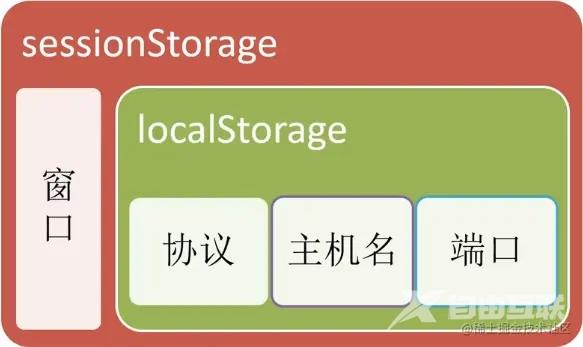目录 封装原因: 建议: 工具库封装模式: 工具库目录: API设计: 代码实践: Hooks设计方式 useSessionStorage.js 简介: 注意点 Api Params Options Result 总结: 封装原因: 名称:useSessionStorag
目录
- 封装原因:
- 建议:
- 工具库封装模式:
- 工具库目录:
- API设计:
- 代码实践:
- Hooks设计方式
- useSessionStorage.js
- 简介:
- 注意点
- Api
- Params
- Options
- Result
- 总结:
封装原因:
名称:useSessionStorage
功能开发过程中,需要进行数据的临时存储,正常情况下,使用localStorage或者 sessionStorage,存在于 window 对象中,使用场景不一样。

sessionStorage的生命周期是在浏览器关闭前,浏览器关闭后自动清理,页面刷新不会清理。
localStorage的生命周期是永久性的,存储的数据需要手动删除。
建议:
- 存储业务数据,登录会话内,使用sessionStorage。
- 需要持久化话的数据,比如token标记之类的可以使用localStorage,使用时需要谨慎对待,以及考虑清理时机。
工具库封装模式:
工具库目录:

API设计:
- 获取本地存储 getCache
- 写入本地存储 setCache
- 设置用户缓存 setUserCache
- 获取用户缓存getUserCache
- 移除cookie removeCookies
代码实践:
import Cookie from 'js-cookie';
/**
* 获取缓存数据
* @param {string} key
* @param {string} type: 缓存类型 'local'(默认) / cookie / session;
*/
function getCache(key, type = 'local') {
let data;
switch (type) {
case 'cookie':
data = Cookie.get(key);
break;
case 'session':
// eslint-disable-next-line no-case-declarations
let strS = sessionStorage.getItem(key);
try {
data = JSON.parse(strS);
} catch (e) {
data = strS;
}
break;
default:
// eslint-disable-next-line no-case-declarations
let strL = localStorage.getItem(key);
try {
data = JSON.parse(strL);
} catch (e) {
data = strL;
}
break;
}
return data;
}
/**
* 获取缓存数据
* @param {string} key
* @param {any} value
* @param {string} type: 缓存类型 'local'(默认) / cookie / session;
*/
function setCache(key, value, type = 'local') {
switch (type) {
case 'cookie':
Cookie.set(key, value, { expires: 7 });
break;
case 'session':
sessionStorage.setItem(key, JSON.stringify(value));
break;
default:
localStorage.setItem(key, JSON.stringify(value));
break;
}
}
/**
* 获取用户缓存
* @param {*} key
* @param {*} type
*/
function getUserCache(key, type = 'local') {
const id = getCache('userId', 'session');
if (!id) {
console.error('无法获取用户信息!');
return;
}
return getCache(`${id}-${key}`, type);
}
/**
* 设置用户缓存
* @param {*} key
* @param {*} value
* @param {*} type
*/
function setUserCache(key, value, type = 'local') {
const id = getCache('userId', 'session');
if (!id) {
console.error('无法获取用户信息!');
return;
}
return setCache(`${id}-${key}`, value, type);
}
function removeCookies(key) {
key && Cookie.remove(key);
}
export default {
getCache,
setCache,
getUserCache,
setUserCache,
removeCookies
};
以上设计属于框架层,提供操作本地存储的能力,但是为什么业务侧需要封装hooks呢?
主要原因:
使用起来有点麻烦,需要import引入工具库,但是hooks使用也需要import引入,因为功能页面大部分引入的都是hooks,使用解构,代码量就会缩减,而且使用认知会减少,引入hooks即可,“你需要用到的都在hooks里面”
Hooks设计方式
那我们开始设计
useSessionStorage.js
import { ref, Ref, isRef, watch as vueWatch } from "vue";
const storage = sessionStorage;
const defaultOptions = {
watch: true
}
/**
* 获取数据类型
* @param defaultValue
* @returns
*/
const getValueType = (defaultValue) => {
return defaultValue == null
? "any"
: typeof defaultValue === "boolean"
? "boolean"
: typeof defaultValue === "string"
? "string"
: typeof defaultValue === "object"
? "object"
: Array.isArray(defaultValue)
? "object"
: !Number.isNaN(defaultValue)
? "number"
: "any";
};
/**
* 按照类型格式数据的常量Map
*/
const TypeSerializers = {
boolean: {
read: (v) => (v != null ? v === "true" : null),
write: (v) => String(v),
},
object: {
read: (v) => (v ? JSON.parse(v) : null),
write: (v) => JSON.stringify(v),
},
number: {
read: (v) => (v != null ? Number.parseFloat(v) : null),
write: (v) => String(v),
},
any: {
read: (v) => (v != null && v !== "null" ? v : null),
write: (v) => String(v),
},
string: {
read: (v) => (v != null ? v : null),
write: (v) => String(v),
},
};
/**
* 缓存操作
*/
const useSessionStorage = (key, initialValue, options) => {
const { watch } = { ...defaultOptions, ...options };
const data = ref(null);
try {
if (initialValue !== undefined) {
data.value = isRef(initialValue) ? initialValue.value : initialValue;
} else {
data.value = JSON.parse(storage.getItem(key) || "{}");
}
} catch (error) {
console.log(error, "useLocalStorage初始化失败");
}
const type = getValueType(data.value);
// 判断类型取格式化方法
let serializer = TypeSerializers[type];
const setStorage = () => storage.setItem(key, serializer.write(data.value));
// 状态监听
if (watch) {
vueWatch(
data,
(newValue) => {
if (newValue === undefined || newValue === null) {
storage.removeItem(key);
return;
}
setStorage();
},
{
deep: true,
}
);
}
setStorage();
return data;
};
export default useSessionStorage;
简介:
useSessionStorage接受一个key和一个value,导出一个响应式的state, 用户直接赋值state.value可自动修改本地sessionStorage。
注意点
- 不设置value可用于获取本地sessionStorage 例:
useSessionStorage('useSessionStorage') - value等于undefined或者null可用于删除本地Storage 例:
state.value = undefined;
Api
const state = useSessionStorage( key: string, initialValue?: any, options?: Options );
Params
Options
Result
总结:
这种使用方式,是针对业务侧vue3的,自带响应式绑定,和使用 Ref一样,利用.value进行获取和赋值。
以上就是业务层hooks封装useSessionStorage实例详解的详细内容,更多关于hooks封装useSessionStorage的资料请关注易盾网络其它相关文章!
